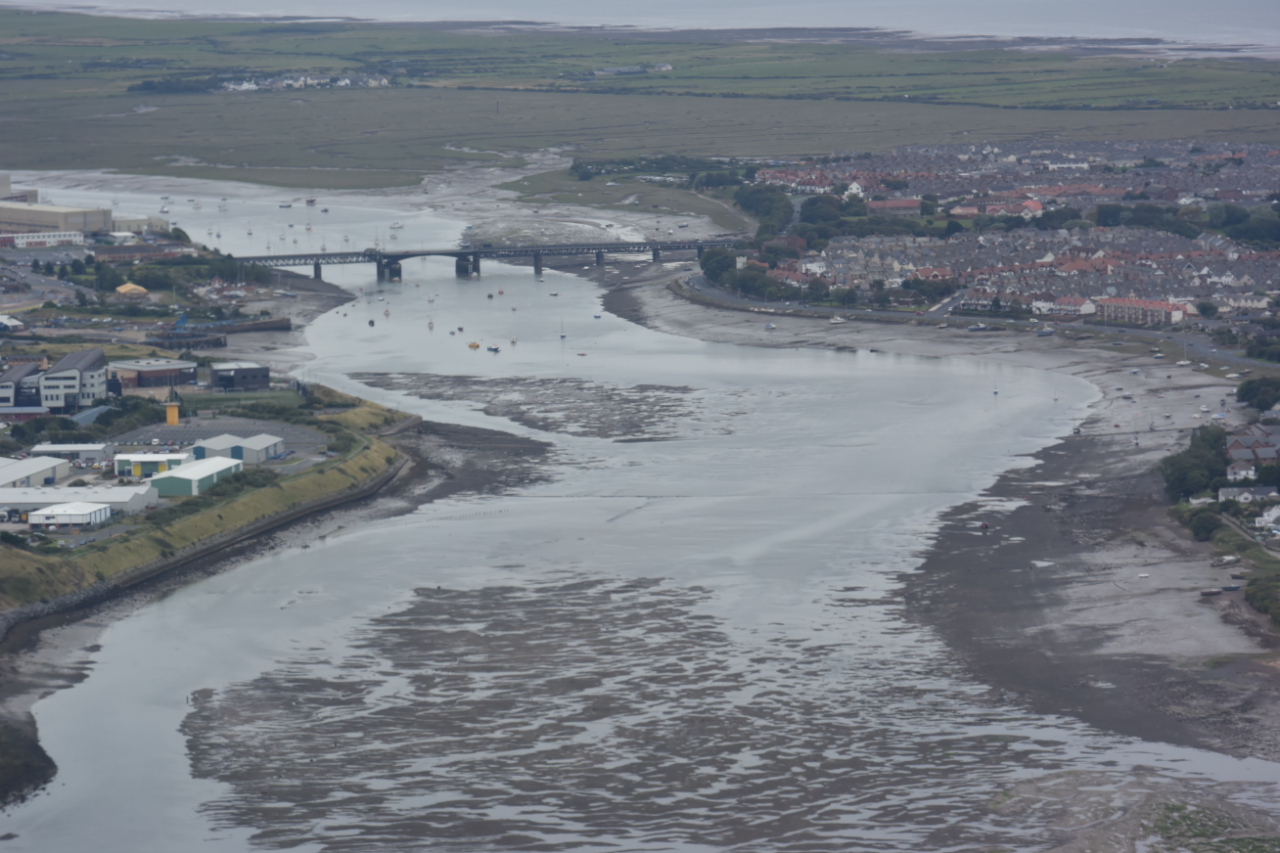
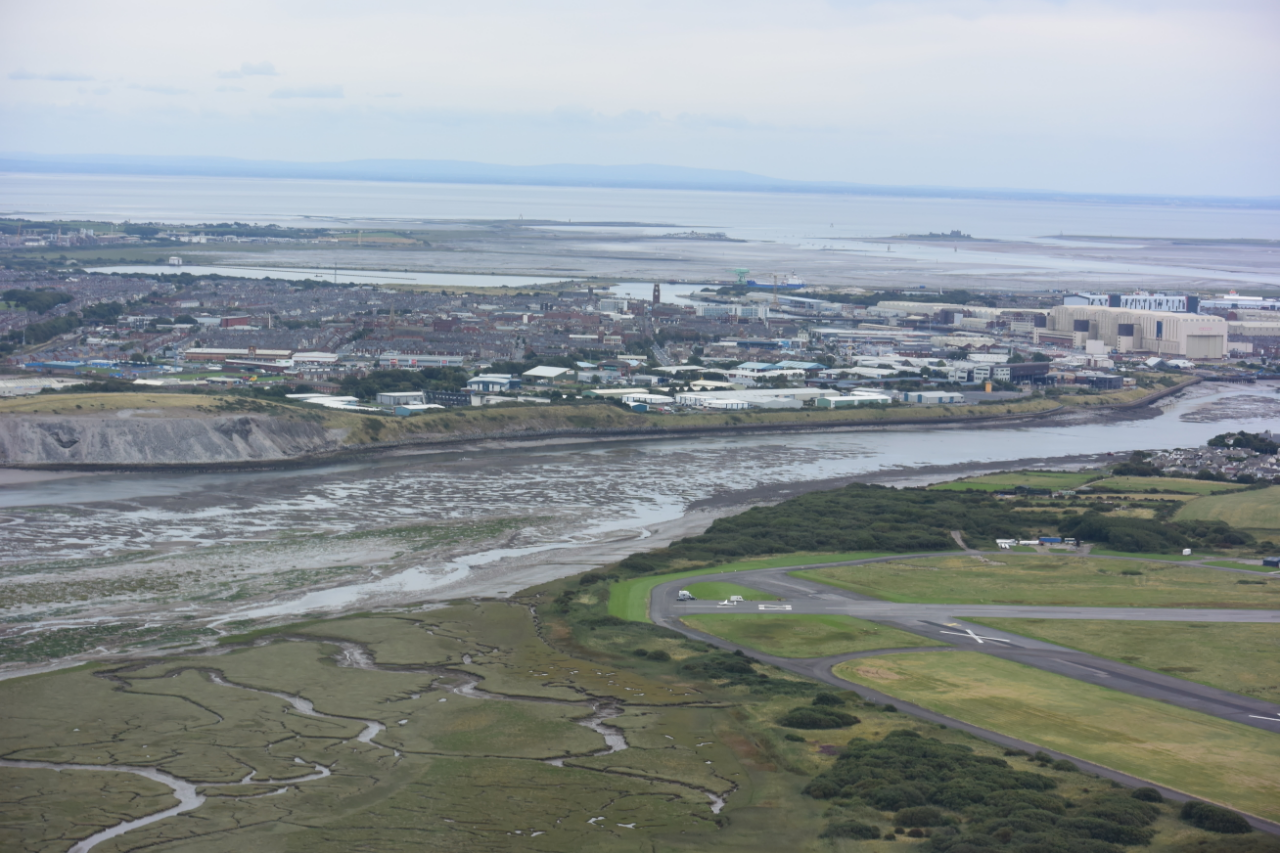
The Walney Channel separates Walney Island from the mainland (Barrow in Furness).
Here I discuss boat navigation in this channel.
The southern section is the access route to Barrow Docks and is well buoyed
and is maintained in depth by dredging.
A (lifting) bridge (Jubilee Bridge) crosses the Channel.
North of the Bridge, the chart gives details (based on an aerial
survey of 1985 and some earlier spot depths) of the deeper channel for
just over half a mile and then there is no information in the area
beyond that (known as the Meetings because the tides around south and
north ends of Walney Island meet there) except for a dotted line marking
the channel in 1985-90 around North End Haws.
Here I summarise what I have gleaned from local information (Andrew Clark of Barrow Sailing Club and Steve Almond of Roa Island Boat Club), from Google Earth, from photographs and from my own visits.
For a discussion of the air draught under the (closed) bridge see here
Views of the channel (and moorings) north of the bridge


The (charted) object lying across the channel from North Scale to the Barrow shore
is a causeway -- a raised footpath to allow crossing at low tide. It is about
2-3ft above the seabed in places - see here:
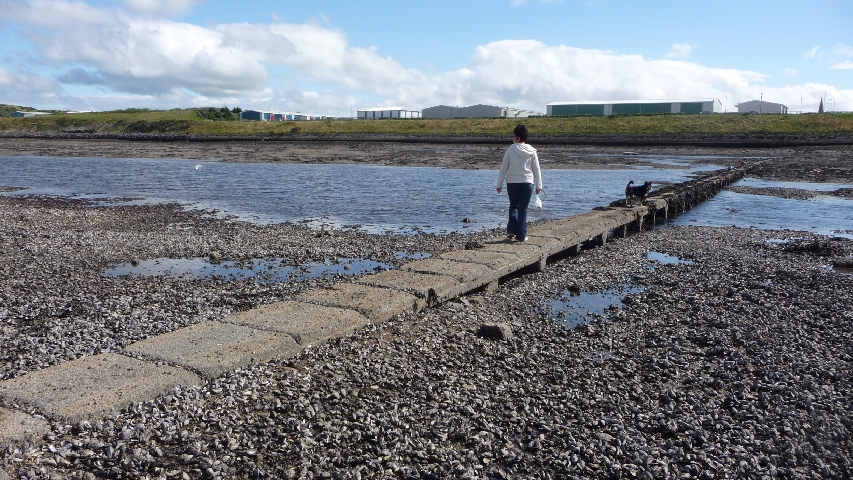
To proceed further north, the deepest water is initially found close to the Barrow shore - near the cliff-like slag heaps. Then one has to cross NNW to the deep channel that runs close to the shore around the headland (North End Haws) that marks the NE corner of Walney Island.
Channel close to the slag heaps (lowish tide):

View from the slag heap of the Meetings (drying at this state of the
tide) looking towards North End Haws.
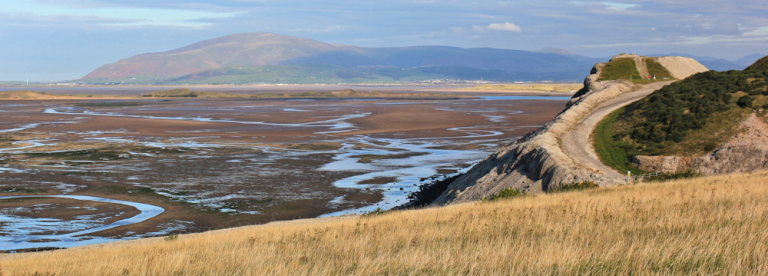
In the Meetings, the channel is mostly dry except near HW.
Image near mid-tide 2016:
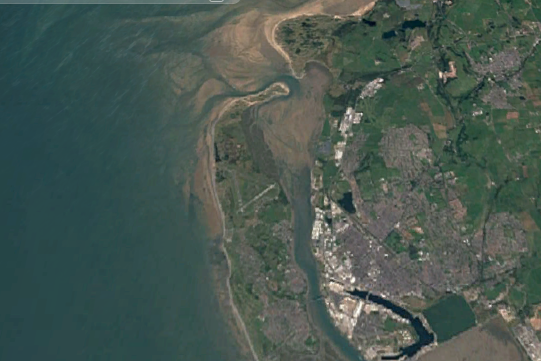
Image near LW:
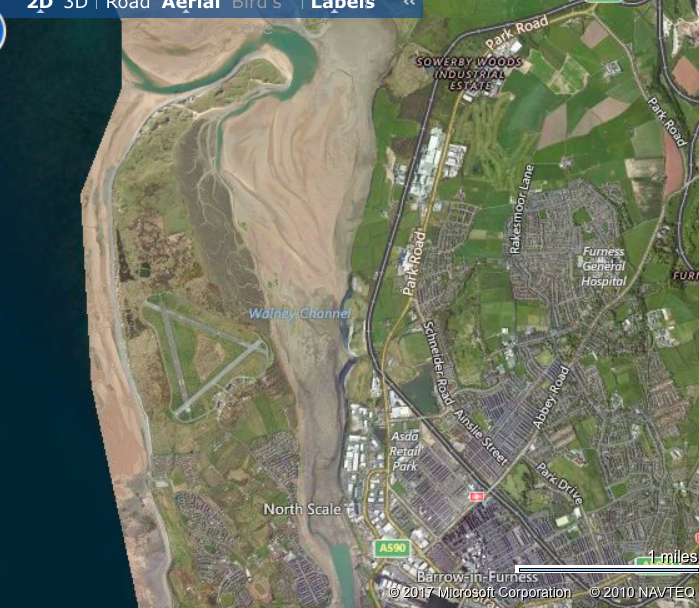
In order to pass through the Meetings, one needs more tidal depth: A
Google Earth image of 18 April 2014 with tidal depth estimated at around 7m
illustrates this:
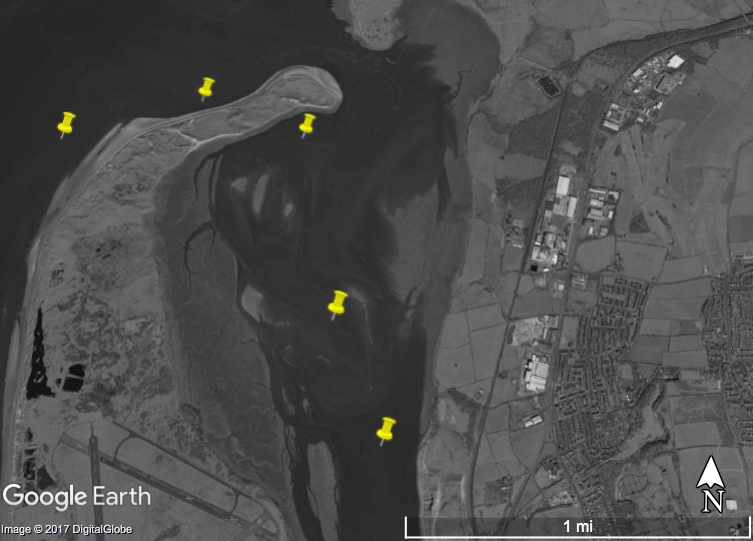
View of the channel at HW (date unknown - so not useful for navigation):
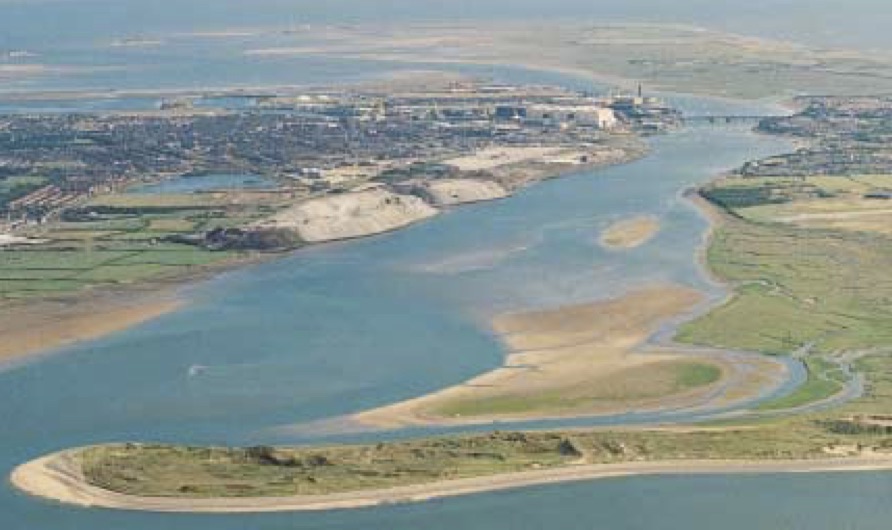
In summary: crossing the Meetings is best achieved at local HW - so leave the Jubilee Bridge at about HW(Barrow)-1 hour. Then one should have crossed by HW. Depth is uncertain - and presumably the deepest channel changes from year to year. Advice is that on a 9m tide one should have at least 2m of depth at HW.
Appendix (2018): see here for my successful trip thorough the meetings and depths recorded.
Historical Note: the 1948 West Coast Pilot cites the channel as being dry at about half-tide. The Scarth channel is quoted as having a depth of about 14ft (4.3m) at HWS and as being used occasionally by local coasting craft.
Records quote that north of the Jubilee Bridge, the tide is briefly slack between HW-45 and HW-15 and then strengthens, running north with maximum rate at HW+30. The north-going current then weakens until by HW+110 it is slack again. Then the current runs south until low water.
If there was no water passing through the Meetings, the tide entering from
the south would build up until high water, when it would be slack, and then
retreat. The explanation for the observed currents lies with water crossing
the Meetings.
A similar (but more dramatic) situation occurs in the Menai Straits when
slack water does not correspond with high water. The explanation, in that
case, is that the tidal range at the NE end is larger and the tidal phase (time
of HW etc) is later, compared to the SW end. See here .
In the Walney Channel, the shallowest part (the Meetings) is quite near (1nm) the northern end and quite far (8 nm) from the southern end of the channel. This suggests that the tidal phases (times of high water etc) are different: so that about 30 minutes before HW Barrow, the tide level is higher (namely at HW) at the northern end which results in an extra current running south - creating the slack at HW-30. Soon afterwards, the level of the tide going north increases (and is higher than that coming south) such that water starts to pass north through the Meetings. This increases the north-going flow (maximum at HW+30) until the lack of depth at the Meetings closes this off and the tide runs south again from HW+110.
The time of HW at Barrow (Ramsden Dock) is 13 minutes later than that at Duddon Bar
and the Meetings are another 3 miles beyond Barrow (Ramsden). It is plausible that
HW at the south side of the Meetings is at about 15-25 minutes after HW at the north side.
Data on the ranges suggests that the tidal range at Barrow is somewhat larger than at
Duddon Bar - but here I neglect this.
Illustration for a 8 metre tidal range, with the tidal levels at each
side of the Meetings (near HW) shown. Tidal levels are in metres above
mean tide level and are drawn for a HW time difference of 20 minutes. Time is
in hours from HW Barrow.
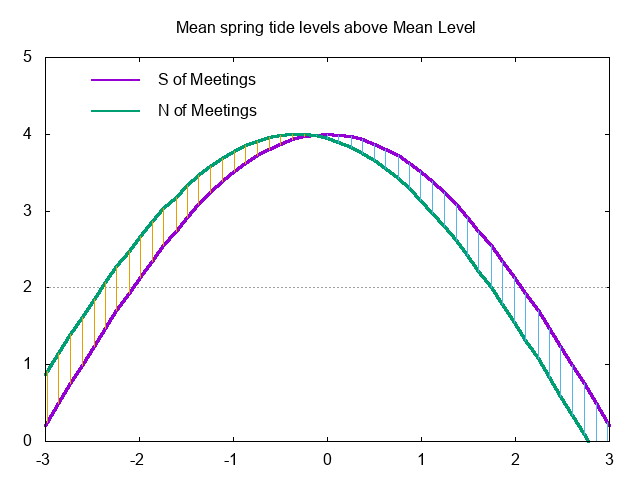
So in this model, extra current runs south until HW(Barrow)-10 and north after that. Also shown is a horizontal line showing approximately the drying height at the Meetings: so no tidal current will flow through when the level is below this. Thus there is only a significant transfer 2 hours or less either side of HW.
Disclaimer This evidence should be taken as a guide and not relied on. Channels can change from year to year and tidal heights are affected by air pressure and winds.